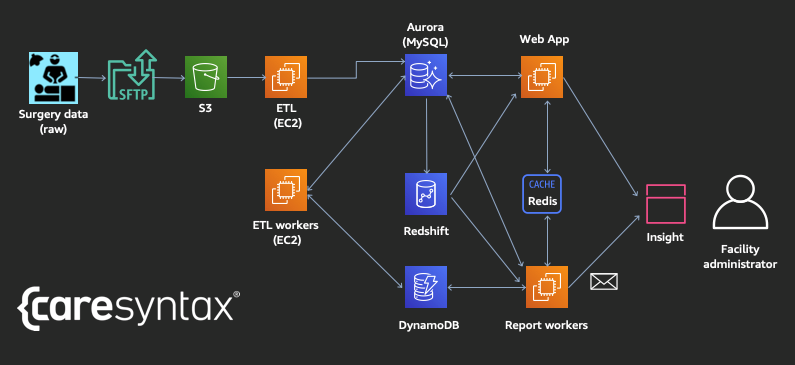AWS Database Blog
Category: Amazon EC2
Build purpose-built database AMIs using Amazon EC2 Image Builder
Managing virtual machine images that you standardize through configuration, consistent security patching, and hardening (also called “golden images”) is a time-consuming task. System administrators and database administrators responsible for these tasks have to define the characteristics of these images (such as which software to pre-install, which versions to use, and which security configurations to apply). […]
Automate benchmark tests for Amazon Aurora PostgreSQL
Optimizing a database is an important activity for new and existing application workloads. You need to take cost, operations, performance, security, and reliability into consideration. Conducting benchmark tests help with these considerations. With Amazon Aurora PostgreSQL-Compatible Edition, you can run multiple benchmark tests with different transaction characteristics matching your data access patterns. In this post, […]
Implement Oracle GoldenGate high availability in the AWS Cloud
The need to move data from one location to another in an asynchronous manner is a goal for many enterprises. Use cases might include migrating data to a reporting database, moving applications from on premises to the cloud, storing a redundant copy in another data center, configuring active/active databases across geographic locations, and performing heterogeneous […]
Architect a disaster recovery for SQL Server on AWS: Part 4
In this series of posts (Part 1, Part 2, Part 3 and Part 4) , we compare and contrast the disaster recovery (DR) solutions available for SQL Server on Amazon Elastic Compute Cloud (Amazon EC2) and help you understand the nature of these trade-offs, and the cost and complexity of implementing DR for SQL Server […]
Architect a disaster recovery for SQL Server on AWS: Part 3
In this series of posts (Part 1, Part 2, Part 3 and Part 4), we compare and contrast the disaster recovery (DR) solutions available for Microsoft SQL Server on Amazon Elastic Compute Cloud (Amazon EC2) and help you understand the nature of these trade-offs, and the cost and complexity of implementing DR for SQL Server […]
Architect a disaster recovery for SQL Server on AWS: Part 2
In this series of posts (Part 1, Part 2, Part 3 and Part 4), we compare and contrast the disaster recovery (DR) solutions available for Microsoft SQL Server on Amazon Elastic Compute Cloud (Amazon EC2). This post introduces three methods for implementing DR for SQL Server on AWS: SQL Server backup and restore, SQL Server […]
Architect a disaster recovery for SQL Server on AWS: Part 1
In today’s world, it’s just a matter of time before disaster happens, and when it happens it’s essential to recover your SQL Server databases and bring the systems online with minimal data loss and downtime. To respond to and recover from an outage of SQL Server database access, high availability (HA) and disaster recovery (DR) […]
Automate post-database creation scripts or steps in an Amazon RDS for Oracle database
In some cases, Database Administrators (DBAs) need to run post-database creation steps such as running SQL statements for creating users and database objects, resetting passwords, or standardizing Oracle database builds. This is mainly done during the database creation phase of new application deployment or during database refreshes that occur in non-production environments. AWS CloudFormation gives […]
Configuring and using Oracle Connection Manager on Amazon EC2 for Amazon RDS for Oracle
This post describes how to configure Oracle Connection Manager on Amazon Elastic Compute Cloud (Amazon EC2) in an Amazon Relational Database Service (Amazon RDS) for Oracle environment, and introduces some best practice use cases when using Oracle Connection Manager on Amazon EC2. Some customers want to have a database proxy server that forwards database connection […]
How caresyntax uses managed database services for better surgical outcomes
This is a guest post from Ken Wu, Chief Technology Officer, and Steve Gordon, Director of Engineering at caresyntax. caresyntax provides the needed tools to make surgery smarter and safer. Our solutions use IoT, analytics, and AI technologies to automate clinical and operational decision support for surgical teams and support all outcome contributors. We help […]









